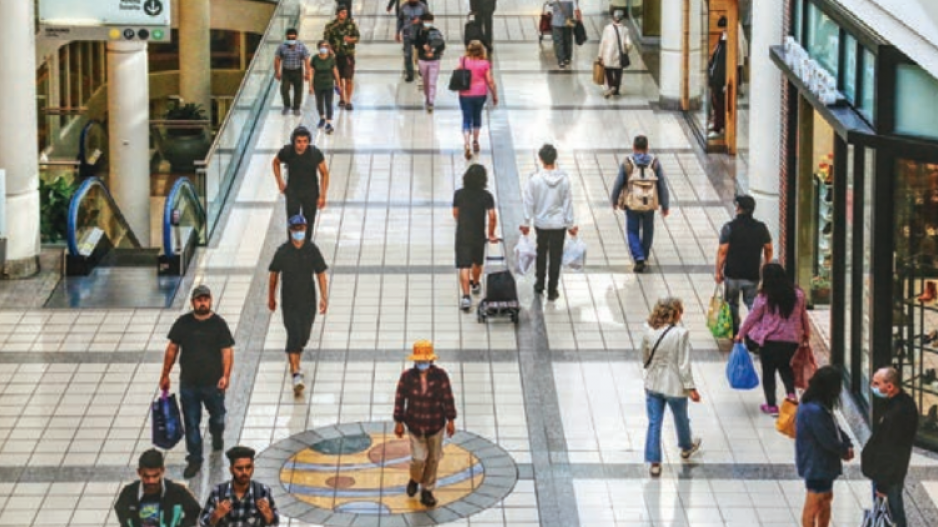Bucking the Canadian trend, B.C. retail spending slowed in August with a one-per-cent drop, in contrast to the 0.4-per-cent national increase. At a seasonally adjusted, $8.85 billion in August, sales were below this year’s monthly average of $8.9 billion, and year-to-date unadjusted retail sales fell 0.3 per cent to $70.5 billion. B.C. consumers are acting with restraint amidst slow economic conditions, with real sales down on a per-capita basis given modest inflation, and population growth at three per cent year over year.
Four out of nine subsectors in B.C. recorded lower year-over-year, unadjusted August retail sales. Gasoline station and fuel vendors reported a 11.9-per-cent decline in sales. Furniture, electronics and appliance retailers also saw a decrease of 11.1 per cent to $475 million, and motor vehicle and parts dealers saw a three-per-cent drop to $2.1 billion. Higher year-over-year sales were seen at health and personal care retailers—up 8.1 per cent to $749 million—and clothing, jewelry and leather goods stores, which were up 8.1 per cent to $691 million. Year to date, sales fell in five out of nine subsectors.
In the Metro Vancouver area, compared to July, seasonally adjusted retail sales were down 0.2 per cent for August, hitting $4.57 billion. Year to year, monthly unadjusted retail sales were down 0.9 per cent, while year-to-date sales were up one per cent.
Consumer spending is expected to be sluggish as the period of high interest rates over the past year continues to work through the economy, and mortgage renewals create continued payment shock for impacted households. That said, further rate cuts will likely provide a lift to demand for large purchases, albeit offset in part by much weaker population growth.
Meanwhile, the number of non-resident travellers entering Canada via British Columbia rose 0.2 per cent in August to a seasonally adjusted 693,000 people, pausing a two-month trend of declining non-resident visitors. Same-day excursions rose 3.8 per cent to 275,000 visitors while overnight tourist visits fell 1.9 per cent to 418,000 people. This is the third consecutive month that the number of overnight tourists declined. Year to date, the total number of non-resident visitors entering the country through B.C. is up 8.5 per cent over the same period last year, with same-day excursions up 8.4 per cent and overnight tourists up 8.7 per cent.
The number of U.S. residents fell 0.4 per cent in August to a seasonally adjusted 549,000 people. Overnight stays were down 3.8 per cent, while same-day trips were up 3.8 per cent. The decline in U.S. residents was seen in arrivals by automobile, which fell by 2.9 per cent. Those who arrived by air remained unchanged at 118,000 visitors, while arrivals by all other modes of transportation increased five per cent to 135,000. The number of residents from other countries other than the U.S. rose 2.7 per cent to 145,000. Air arrivals were down 3.8 per cent, balanced by a 0.5-per-cent decline in land and water arrivals.
Bryan Yu is chief economist at Central 1.




